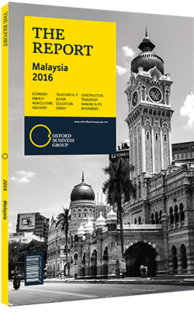Malaysia's free trade agreements grow in importance and scope
Despite a heated domestic debate on the costs and benefits of the Trans-Pacific Partnership agreement (TPP), the Malaysian government has been forging ahead with its plan to join the US-led regional trade agreement, which is expected to have a high impact on export and import flows. A comprehensive document, the TPP covers 30 chapters, ranging from issues such as trade in services, investment and government procurement to labour and intellectual property. The agreement will have far reaching consequences for Malaysian exporters. The areas that provoked a national debate include protection of automotives, pharmaceutical products, electronics and data protection. During negotiations the Malaysian government requested a number of transition periods to mitigate the negative impact on these sectors.
Trade Offs
The free trade agreement (FTA), which involves 12 countries, including Australia, Brunei Darussalam, Canada, the US and Vietnam, would strengthen Malaysia’s ties with the wider world by expanding trade and market access in terms of economic and investment growth, according to Prime Minister Najib Razak. His remarks came after anti-TPP rallies were held in the region. The protests were in response to a visit by US President Barack Obama in 2015. Opposition leaders warned that the US would use pressure tactics to obtain Kuala Lumpur’s approval for the deal. “The US might offer security enhancement as a trade-off if Malaysia compromises on its red lines in the TPP. The US regime has always used trade and security hand-in-hand to twist the arms of nations to accept its economic hegemony,” the treasurer of Malaysia’s Socialist Party, A Sivarajan, said. Malaysia was particularly reluctant to accept the changes to its government procurement policies that could result from the deal, while domestic critics say it will have an impact on equality initiatives such as pro-ethnic Malay affirmative action introduced after the 1969 race riots.“[Joining the proposed TPP agreement] may mean disruption of our effort to reduce national tension caused by economic disparities,” former Malaysian Prime Minister Mahathir Mohamad told local media. He added that retaining some trade barriers was necessary to protect local industries. “To ask us to compete with fully developed countries, that is a task that is almost impossible.”
Proponents of the TPP say it will help dismantle non-tariff barriers and enforce best practice, while obliging countries with closed economies to tackle domestic monopolies. However, even its supporters claim its free trade principles are being diluted as divergent economies such as those of Australia and Vietnam demand unique changes.
Small May Be Best
Critics have suggested that potential signatories to the TPP, such as Malaysia, would benefit more from focusing on smaller-scale, bilateral or regional free trade agreements rather than joining global initiatives, which include economies on the scale of the US and Japan. The Asian Development Bank (ADB) said that the time spent on negotiating “mega” trade deals such as the TPP would be better spent consolidating more bilateral trade agreements. “Whether or not countries wish to pursue mega-regional agreements, in the meantime they should simply pick the lowest tariff among their myriad agreements and adopt this single measure. The solution would also apply to many non-tariff barriers, and would have clear economic benefits, in addition to furthering the cause of global free trade,” Jayant Menon, lead economist for trade and regional cooperation at ADB, told Emerging Markets.
In this vein, the Malaysian and Turkish governments signed an FTA in 2015 that is expected to boost trade to $5bn by 2018 by providing preferential market access for Malaysian goods entering the Turkish market and vice-versa. It also included significant bilateral conditions such as reducing the tariff on crude palm oil exports to 20% from the current 31%.
You have reached the limit of premium articles you can view for free.
Choose from the options below to purchase print or digital editions of our Reports. You can also purchase a website subscription giving you unlimited access to all of our Reports online for 12 months.
If you have already purchased this Report or have a website subscription, please login to continue.

